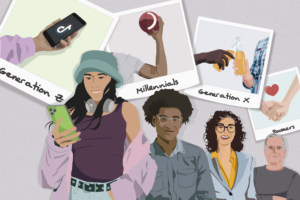Blog January 8, 2021
Older Americans Support Getting Vaccinated Regardless of Their Politics or the Perceived Threat of COVID-19
As the US ramps up vaccinations, political identity is important in predicting the behavior of younger Americans. Continue Reading →
Our survey showed that when our social circles include a more diverse mix of political beliefs, we are more open to argument and less ideologically extreme. And, arguably, the best way to get to this point is to discuss — and disagree about — politics more. Continue Reading →
In The News December 17, 2020
Most common religious identity among young adults is ‘none;’ belief in God not necessary for morality: study
The holidays look different this year. In addition to traveling less, having smaller gatherings, and gathering virtually, Americans are also altering their spending habits. Continue Reading →
Survey report December 15, 2020
Religious Diversity and Change in American Social Networks: How Our Social Connections Shape Religious Beliefs and Behavior

The American Social Network Survey uses a unique design to measure the race, educational background, politics, and religion of our social contacts. The results reveal that personal behavior and beliefs are socially constructed—what we know is influenced by who we know. Americans who have more politically diverse social networks express greater openness to compromise and are less bound to their own beliefs. Racial and ethnic diversity in Americans’ social networks makes one more sensitive to race issues. Continue Reading →
Survey report December 9, 2020
A Turning Point? Americans Grapple With COVID-19 Amid Enduring Partisan and Racial Divisions

The November 2020 APS explores how Americans are grappling with COVID-19 amid soaring numbers of infections. Though large partisan divisions persist, more Americans say they would get a free, FDA-approved vaccine. It also challenges the “shy Trump voter” hypothesis and explores possible explanations for Trump’s increased support among non-white voters. Continue Reading →









